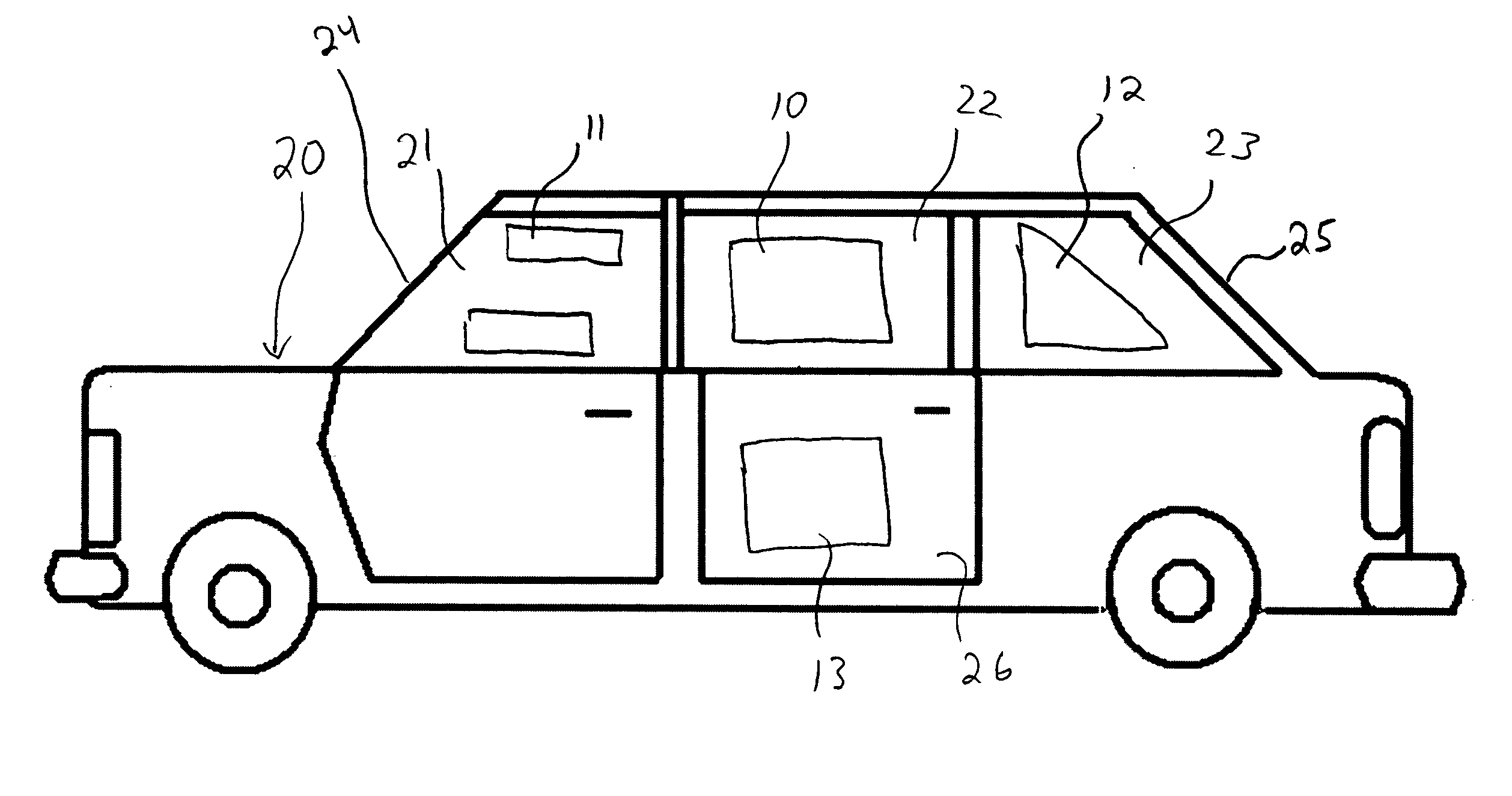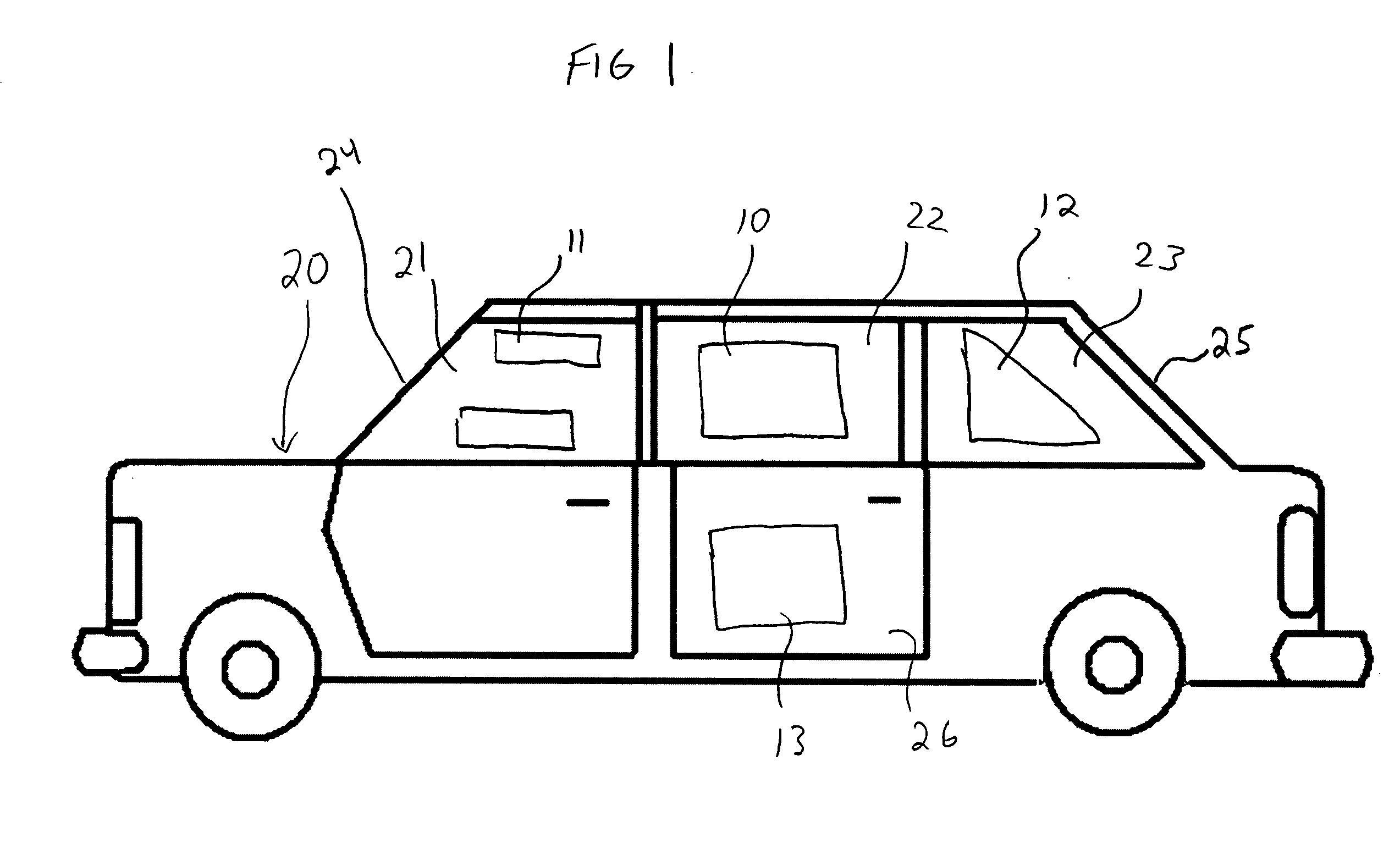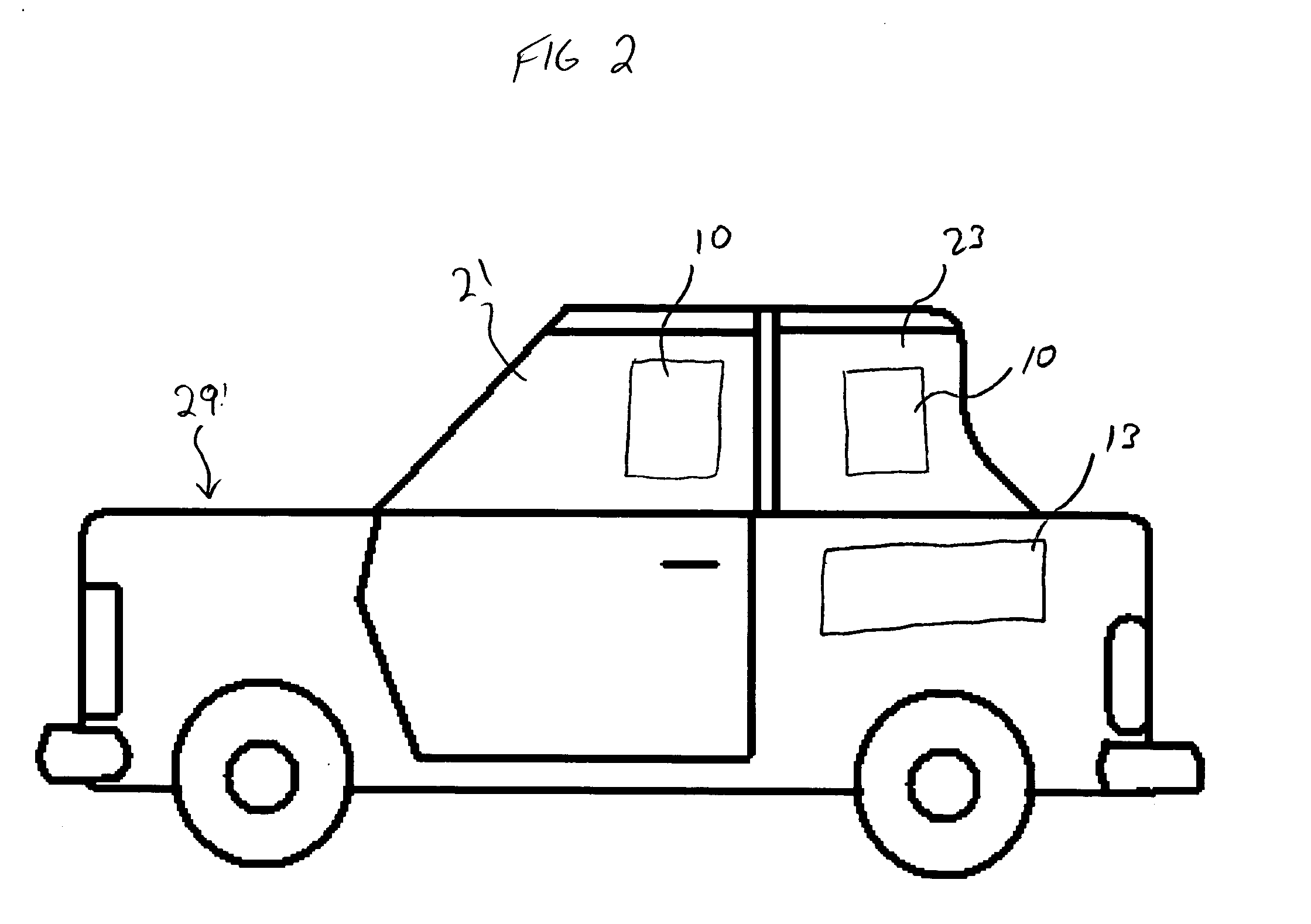Multiple static cling sign method
a multi-static, sign technology, applied in the direction of display means, instruments, advertising, etc., can solve the problems of lack of metal in glove boxes, general usability of cards and attachment means, and deny magnetic attachment, so as to achieve the effect of maximizing the perceived information
- Summary
- Abstract
- Description
- Claims
- Application Information
AI Technical Summary
Benefits of technology
Problems solved by technology
Method used
Image
Examples
Embodiment Construction
[0032] This invention pertains to a message display media sign for placement on the interior of a motor vehicle window, structure, or various objects, to convey a custom-written message or graphic that is visible to the viewer, with multiple signs used. The sign removably adheres to smooth surfaces such as glass or plastic, including other highly polished or smooth surfaces by means of the static cling vinyl, which comprises the material used to create the signs.
[0033] Referring now to FIG. 1, a motor vehicle 20 is shown. The example of a motor vehicle 20 is provided as a typical automobile. It should be understood that the term “motor vehicle” is intended to include any type of conveyance, such as trucks, cars, motorcycles, buses, vans scooters, watercraft, as well as aircraft, or anything which is considered as a means of transportation. FIG. 1 depicts a motor vehicle, as seen from the driver's side, in which the front driver's side window 21 is shown, as well as the back seat wi...
PUM
 Login to View More
Login to View More Abstract
Description
Claims
Application Information
 Login to View More
Login to View More - R&D
- Intellectual Property
- Life Sciences
- Materials
- Tech Scout
- Unparalleled Data Quality
- Higher Quality Content
- 60% Fewer Hallucinations
Browse by: Latest US Patents, China's latest patents, Technical Efficacy Thesaurus, Application Domain, Technology Topic, Popular Technical Reports.
© 2025 PatSnap. All rights reserved.Legal|Privacy policy|Modern Slavery Act Transparency Statement|Sitemap|About US| Contact US: help@patsnap.com



